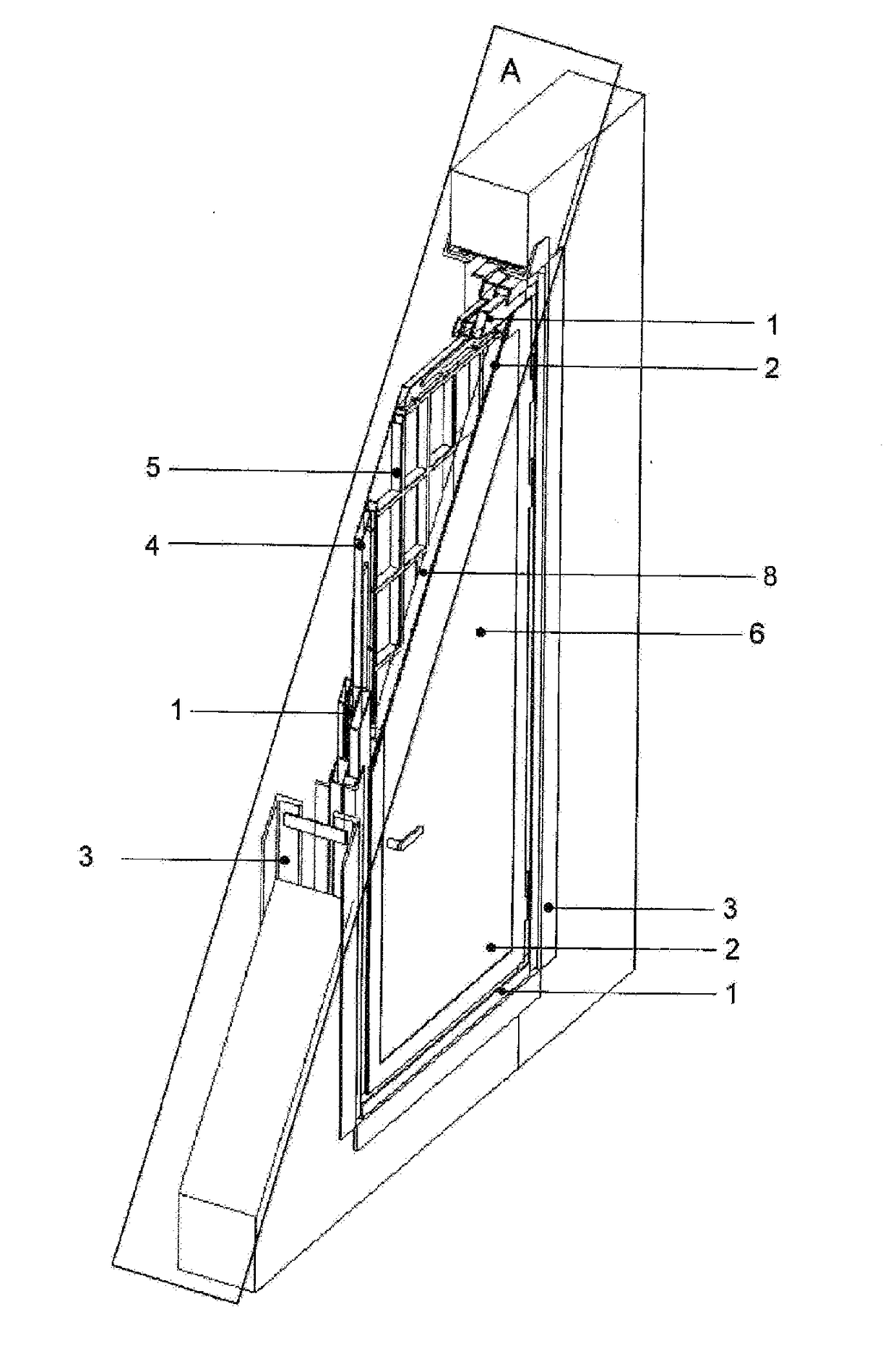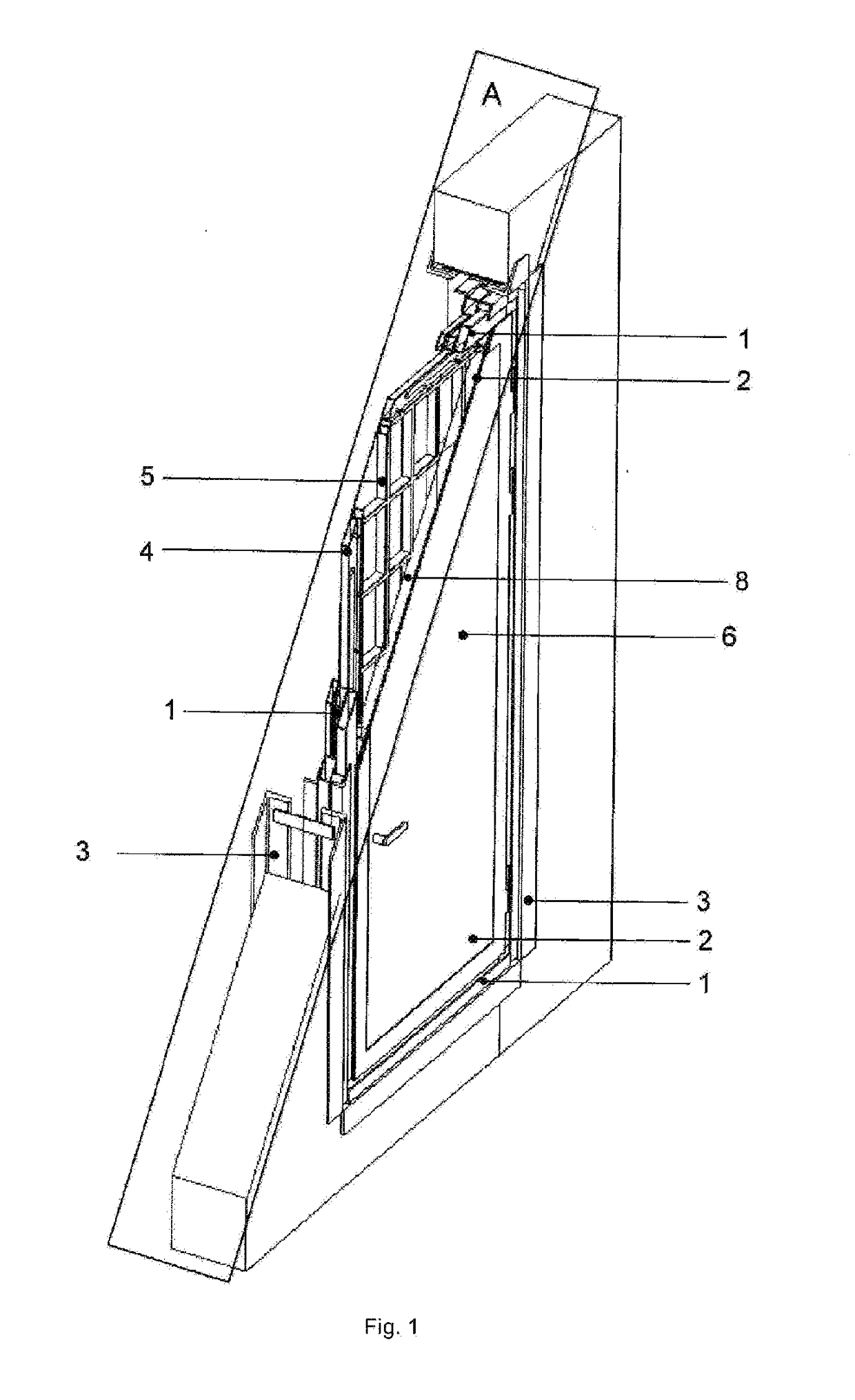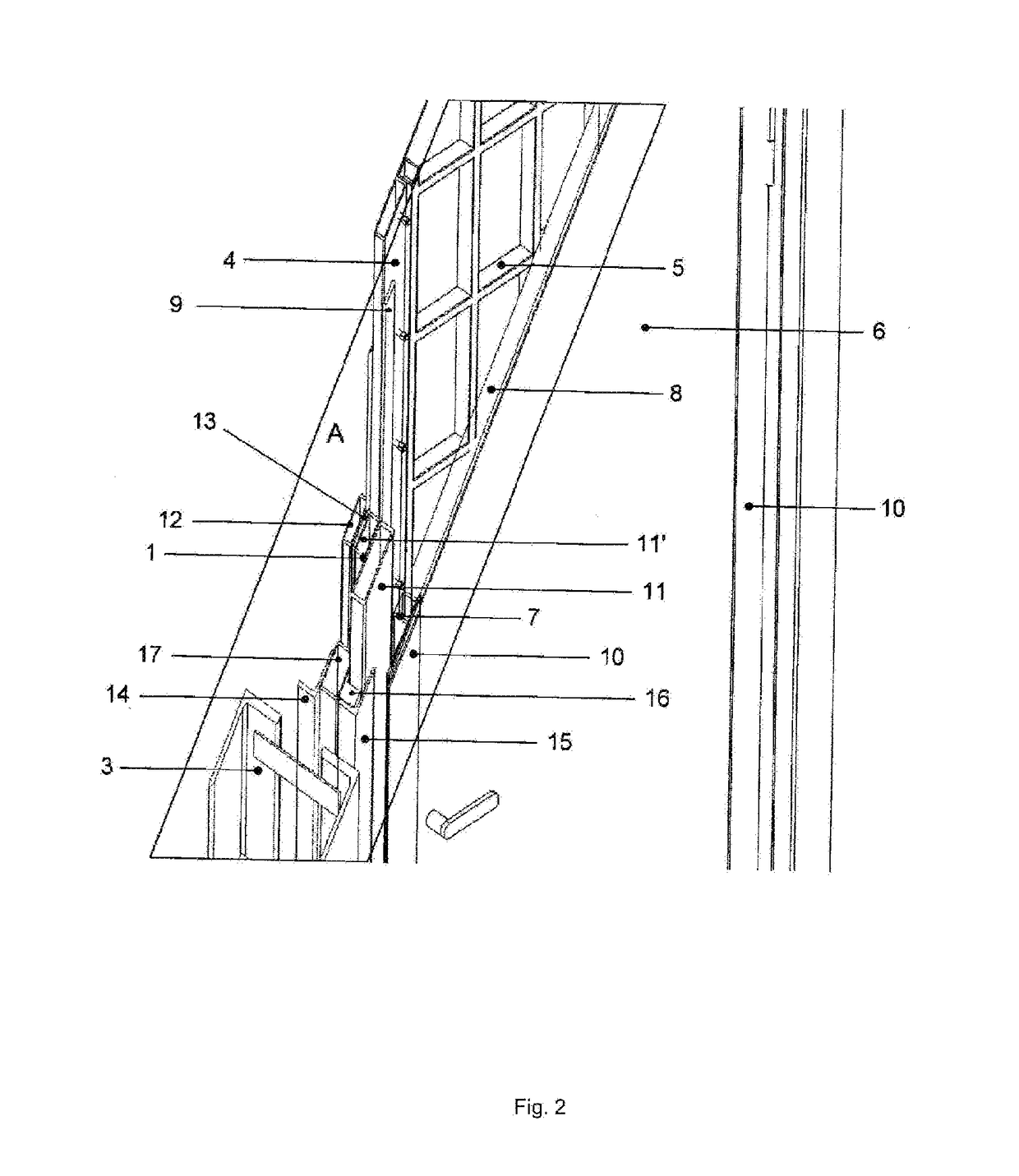Fire-blast resistant door assembly and methods for installing the same
a technology for door assemblies and fire-blast resistant materials, which is applied in the direction of war-like protection, construction, building components, etc., can solve the problems of imposing strict constraints, labor- and time-consuming, and the structure of the door cannot withstand the effecting factors, so as to enhance the fire and blast resistance properties, and not require excessive time and labor costs.
- Summary
- Abstract
- Description
- Claims
- Application Information
AI Technical Summary
Benefits of technology
Problems solved by technology
Method used
Image
Examples
Embodiment Construction
[0044]Hereafter, with reference to the accompanying drawings described is a fire-blast resistant door assembly, as well as methods for installing the same according to the preferred embodiments of the present invention.
[0045]FIG. 1 schematically illustrates the section with the set of planes parallel to the plane A, of the fire-blast resistant assembly comprising a door frame (1) and a door leaf (2), which is installed in a door opening with a metallic casing (3). FIG. 2 shows the enlarged detail of the fire-blast resistant door assembly. The door leaf (2) is a structure consisting of a rear part and a front part. The rear part of the door leaf (2) comprises a metallic rear panel (20, see FIG. 3), wherein a rear stiffener (4) is welded along the perimeter of this panel, said stiffener being made of hollow pipe sections with rectangular cross-section and forming a closed loop that delimits a mounting cavity. In this cavity, hereinafter referred to as the second mounting cavity, a sup...
PUM
 Login to View More
Login to View More Abstract
Description
Claims
Application Information
 Login to View More
Login to View More - R&D
- Intellectual Property
- Life Sciences
- Materials
- Tech Scout
- Unparalleled Data Quality
- Higher Quality Content
- 60% Fewer Hallucinations
Browse by: Latest US Patents, China's latest patents, Technical Efficacy Thesaurus, Application Domain, Technology Topic, Popular Technical Reports.
© 2025 PatSnap. All rights reserved.Legal|Privacy policy|Modern Slavery Act Transparency Statement|Sitemap|About US| Contact US: help@patsnap.com



